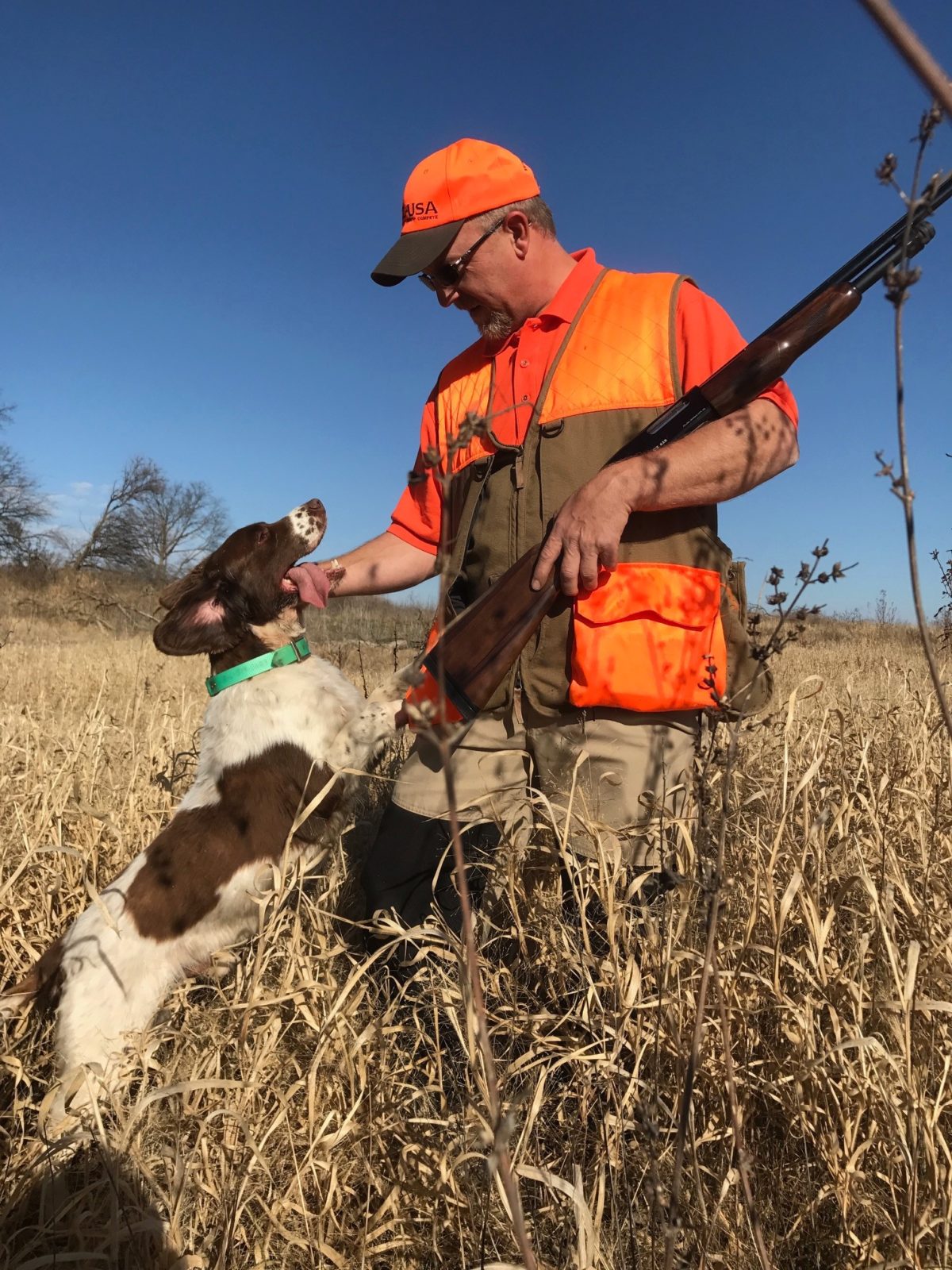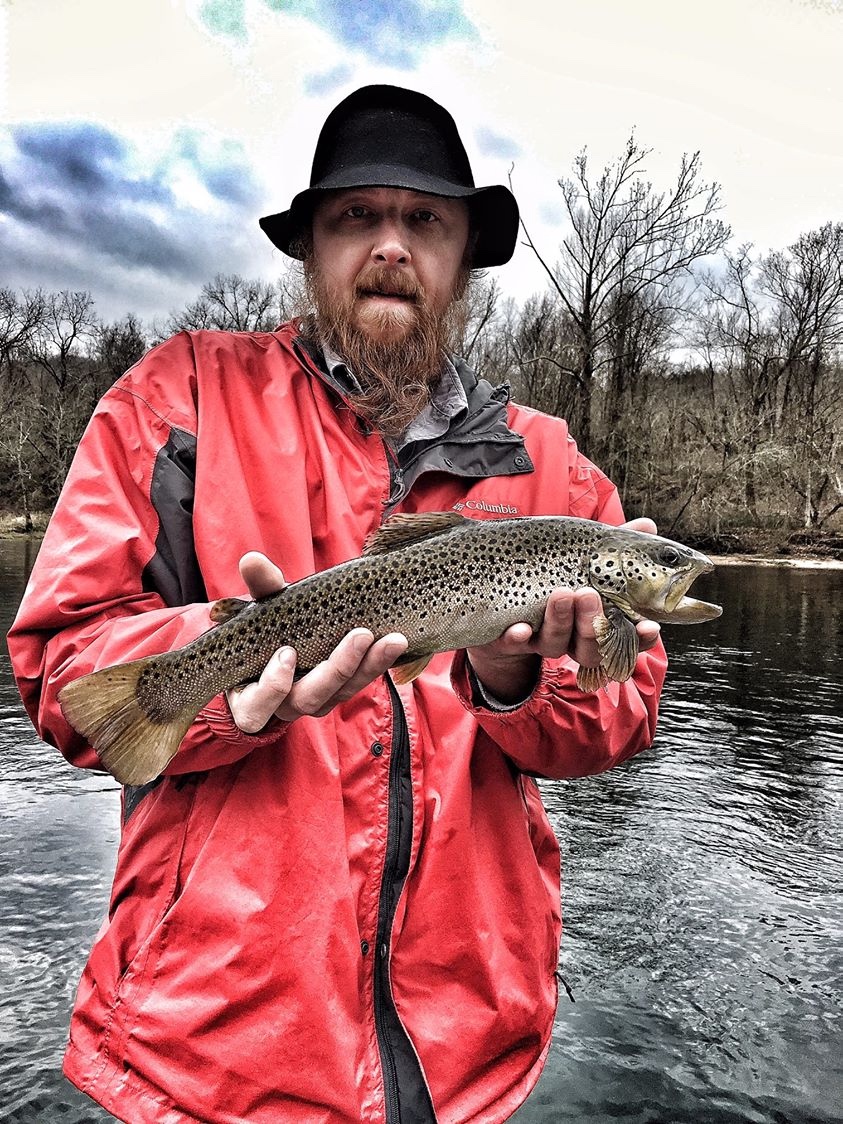Public Land Bobs: An Exercise in Expectations


Today, Missouri quail hunters have to limit their expectations. Or so I thought.
“I’m 15 minutes away,” said Dave Miller over the phone as I sat outside an old gas station that time may or may not have forgotten. We were meeting early that Saturday morning to hunt Missouri’s new Recreational Access Program (MRAP) public lands program.
As U.S. citizens we are lucky to live in a country that has public hunting. As Missourians we are even luckier to live in a state in which the Department of Conservation is placing an emphasis on the revival of bobwhite quail. Quail hunting holds a special place for Dave and me, as it does for many people in Missouri. It’s what we grew up hunting. It’s why we spend hours training and conditioning birddogs. It’s why we both are conservationists, me at CFM and him at CZ-USA, one of CFM’s top supporters.
Professionally, Dave is responsible for developing CZ-USA’s new shotgun lines. Earlier in the year when he told me CZ-USA was coming out with a new 628, 28-gauge pump, my ears perked up and I asked him if we could try it out in the field. For those readers who don’t know, the 28-gauge is a gun shrouded in bird hunting mystique, known traditionally as either a beginners’ gun or an experts’ gun. Recently, the gauge has seen a revival within upland circles, because it is light, fast, and it has proven to deliver a more efficient and effective shot pattern than traditional shotgun gauges.
While one of the smallest gauges, it is very effective at dispatching game. “I never hesitate shooting it on a pheasant hunt, especially not dove, quail, grouse, anything really,” said Miller. “When you shoot it just be smart, I never shoot a rooster pheasant past 25-30 yards. Just remember with any shot you take regardless of the gauge you are responsible for that shot, if you wound a bird and do not recover it you’ve got to live with it.”
Built on a gauge-specific 7075 aluminum action, the 628, 28 gauge pump has a deep glossy blue finish and select grade Turkish Walnut. A set of interchangeable chokes lets you tune constriction and the full forend and pistol grip help make this lithe shotgun feel good in the hands. With a 28″ barrel, both variants clock in at well under 6 lbs., it would be a light gun to carry in the quail hunt, which sometimes can last many miles.
In its third year, the MRAP program is proving to be a boon for the state’s outdoorspeople. Missouri is 93% privately owned, so one of the limiting factors for hunter recruitment and retention is hunting access. MRAP is a voluntary program that offers private landowners annual incentive payments ($15-$25 per acre) for opening their land to public access for outdoor recreational activities such as hunting, fishing, and wildlife viewing. Any Missouri landowner (except governmental entities) is eligible to participate in the program. Landowners may offer all, or portions of tracts, as long as the offered acres meet minimum acreage and habitat requirements. Offers must be at least 40 contiguous acres in size, and at least 20 percent of the tract must provide quality habitat. The exception is land offered for fishing access, which is not subject to the minimum acreage and habitat requirements. Additionally, Missouri’s Recreational Use Immunity Law offers liability protection to private landowners participating in MRAP, so they can rest assured about having new hunters on their property.
“This program is a win-win for both landowners and outdoor enthusiasts. We compensate the landowner for allowing public hunting, fishing or wildlife viewing, then the outdoorsperson gets a chance to enjoy an area with quality wildlife habitat,” said Bill White, private land services division chief for the Missouri Department of Conservation. “We received a lot of positive comments about the program from deer and quail hunters who utilized the new opportunities.”
As Dave and I pulled up to the MRAP parking lot, it looked like the most ideal habitat a bird, and in turn hunter, could ask for. The parcel was a few hundred acres mixed with beneficial native grasses, shrubby cover, woodlines and food plots. This type of quail landscape is known as a “habitat mosaic” and allows for year-round survival of upland species by providing the species habitat need at any given time whether it be roosting cover, winter cover, nesting cover, brood rearing cover, etc.
Our dogs saw the field and yipped with pre-hunt excitement. We dropped the tailgates, and at the breakaway my Irish setter, Annie, and Dave’s two young springer spaniels disappeared into the grass.
We moved through the field and our dogs worked; noses high and feet fast. Dave and I talked about quail hunting and what we hope to have happen in the future. He also explained how the Aguila shells we were using were perfect round for 28 gauges, as it has ¾ oz load in a .550 bore (28 gauge), which is ideal for proper distribution of shot. This is also the standard 28 gauge load you’d buy off the shelves, which another advantage the 28 gauge has over other gauges.
Our conversation was cut short, because within fifteen minutes, I heard Annie’s SportDOG Brand GPS collar sound off, meaning she’d gone on point. A covey of quail was within fifteen yards of her and she could smell them hidden somewhere in the clumps of grass. While I am not the earliest adopter to technology, SportDOG Brand’s track and train TEK series collar give pointing dog owners the confidence of knowing exactly where your dog is at all times, which is invaluable in hunting new habitat.
Following the GSP, we moved up to where Annie stood motionless, pointing in the direction she thought the birds were. Somewhere within 15 yards of her was a covey of quail, hidden in the clumps of grass. What happened next, the covey flush, is almost indescribable if you have never seen it firsthand. Try to imagine 20 baseball-sized birds exploding at 40mph in every direction and a distinct “WHHIIRRRLL!!!” of forty-wing beating fluttering at once. I shouldered the 628, pulled the trigger and waited.
“Fetch it up, Annie!”
It had all come together so quickly. As I was taking in the moment, Annie was already running back with a Missouri trophy – a wild bobwhite quail from public land. No horns, no beards, no pounds or inches; just a drab little bird that calls the prairie its home.
A few years ago this story may have ended here, but not today. We kept hunting and we kept finding birds. Nearly a hundred yards after the first covey, Dave connected on another covey, and I picked up another single. On that property, we found four coveys of quail in less than two hours. This is unheard of in most quail hunting parts of the country. Later that day, we hunted on an MDC quail emphasis area (publicly owned lands managed with an emphasis for quail recovery) and found even more birds. All the while, the 628 performed beautifully.
The day ended with a bag full of birds, tired dogs, and optimism for the future public land quail hunting. Hunts like that don’t just happen. It takes countless hours of work from countless numbers of people. It’s programs like MRAP, Quail Emphasis Areas, the work of MDC, private landowners, conservation groups all do to put habitat on the ground and access within hunters’ reach. Furthermore, it is businesses like CZ-USA, SportDOG Brand, and the many others who support conservation organizations’ missions that make stories like this possible.
Now another quail hunting season is over. Annie is resting after knee surgery and I’m left to relive all the hunts of last season – a season that was somehow better than the season before, which was better than the season before that. I think that while quail recovery still has a long way to go, the birds are back on the right track. When describing quail hunting I used to say, “Gone are the five covey days on public ground, so as bird hunters we need to reevaluate our expectations.” After this season, I noticed I’ve now started to say, “Gone are the two covey days on public ground, so as bird hunters we can revaluate our expectations.”
Rehan Nana
Director of Corporate Relations, CFM




